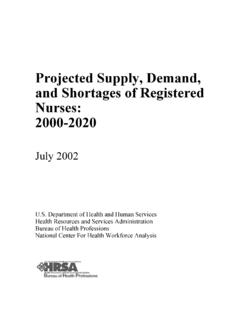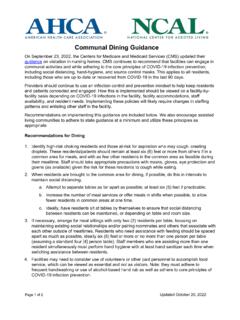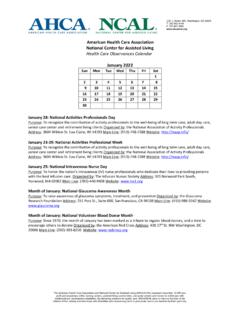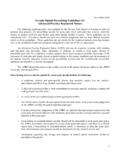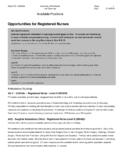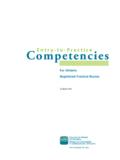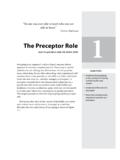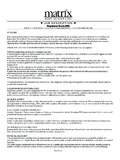Transcription of Projected Supply and Demand and Shortages of Registered …
1 Projected Supply , Demand , and Shortages of Registered Nurses: 2000-2020 July 2002 Department of Health and Human Services Health Resources and Services Administration Bureau of Health Professions National Center For Health Workforce Analysis Projected Supply , Demand , and Shortages of Registered Nurses: 2000-2020 Introduction: The Health Resources and Service Administration, Bureau of Health Professions, National Center for Health Workforce Analysis ( National Center ) is the primary Federal agency responsible for providing information and analysis relating to the Supply and Demand for health professionals. In support of this role, the National Center has recently assumed responsibility from the Bureau s Division of Nursing for conducting the quadrennial National Sample Survey of Registered Nurses and developing Supply and Demand projections for Registered nurses.
2 Supply and Demand projections of Registered nurses (RNs) for the period 2000 through 2020 are the subject of this Using data on Supply trends drawn from the 2000 National Sample Survey of Registered Nurses, these new projections show that a shortage of FTE Registered nurses, previously Projected to begin around 2007, was already evident in the year 2000. This report consists of three sections. The first presents the National Center s projections of RN Supply and Demand , both national and State-specific, for the years 2000 through 2020. The second identifies and discusses the driving forces and trends underlying the Projected Supply ; the third does the same for the Projected Demand . Relevant charts, maps, and tables are presented both in the body of the report and in an Appendix.
3 NATIONAL Supply AND Demand PROJECTIONS In 2000, the National Supply of FTE Registered nurses was estimated at million while the Demand was estimated at 2 million, a shortage of 110,000 or 6 percent. Based on what is known about trends in the Supply of RNs and their anticipated Demand , the shortage is expected to grow relatively slowly until 2010, by which time it will have reached 12 percent. At that point Demand will begin to exceed Supply at an accelerated rate and by 2015 the shortage, a relatively modest 6 percent in the year 2000, will have almost quadrupled to 20 percent. If not addressed, and if current trends continue, the shortage is Projected to grow to 29 percent by 2020. These numbers are shown in Table 1 of the Appendix.
4 The Projected shortage in 2020 results from a Projected 40 percent increase in Demand between 2000 and 2020 compared to a Projected 6 percent growth in Supply . Demand will grow steadily at a rate of percent annually, a relatively modest growth rate when compared to the percent annual growth in Demand Projected by the Department of Labor s Bureau of Labor Statistics. Factors driving the growth in Demand include an 18 percent increase in population, a larger proportion of elderly persons, and medical 1 Both Supply and Demand are defined in this report in full-time equivalent (FTE) terms. Full-time equivalency provides an unequivocal measure of the number of nurses that would be needed (in the case of Demand ) or available (in the case of Supply ) if everyone worked full-time.
5 There were million employed nurses in the United States in 2000, some of whom worked part-time. In FTE terms, that would be the equivalent of approximately million full-time RNs. 2advances that heighten the need for nurses. In contrast, the Projected growth in Supply is expected to reach a peak of only 10 percent by 2011 and then begin to decline as the number of nurses leaving the profession exceeds the number that enter. (See Chart 1) Chart 1: National Supply and Demand Projections for FTE Registered Nurses: 2000 to 20201,000,0001,500,0002,000,0002,500,000 3,000,00020000204060810121416182020 DemandSupplySource: Bureau of Health Professions, RN Supply and Demand Projections Distribution of the RN Shortage: The national shortage of RNs is not evenly distributed across States.
6 In 2000, 30 States were estimated to have Shortages . (See Map 1) Because of uncertainties in the estimation process, only States with Shortages greater than 3 percent are identified as shortage States. Affecting the accuracy of State-specific Supply and Demand projections are situations where: (a) a State may have many local Shortages yet overall have an adequate Supply ; (b) significant numbers of nurses commute across State boundaries to work; (c) jurisdictions like Washington, provide service to large populations from outside its boundaries; and (d) Demand projection methodology inadequately accounts for the differences in nursing utilization patterns that may exist between States. Map 1: States with Shortages of FTE Registered Nurses in 2000 States with shortagesStates without Shortages 3 By 2020, 44 States and the District of Columbia are Projected to have Shortages .
7 (See Map 2) State-specific projections for the years 2000 through 2020 are found in Tables 2 through 6 of the Appendix. Map 2: States with Projected Shortages of FTE Registered Nurses in 2020 States with shortagesStates without Shortages Projected Supply OF RNS DRIVING FORCES AND TRENDS An examination of factors affecting the Supply of RNs sheds light on what has caused the current shortage. These factors include the declining number of nursing school graduates, the aging of the RN workforce, declines in relative earnings, and the emergence of alternative job opportunities. Declining numbers of nursing graduates: Data on the growth in new RNs, as measured by those passing the RN licensing test (NCLEX), show that after growing steadily during the first half of the 1990s the number of new RN graduates fell annually in the last half of the decade, resulting in 26 percent fewer RN graduates in 2000 than in 1995.
8 Declines were seen across all degree programs--diploma, associate degree, and baccalaureate. The decrease in diploma graduates continues a trend driven in the past few decades by the closing of hospital-based diploma programs. In contrast, the declines in associate degree and baccalaureate graduates are a more recent phenomenon, having occurred only since the mid-1990s. (See Chart 2) Further, due to declines in enrollments over the past 5 years, no increase in the number of graduates is expected in the short term. Although the American Association of Colleges of Nursing (AACN) did report a 4 percent increase in baccalaureate enrollment between 2000 and 2001, the relatively longer educational pipeline for baccalaureate students increases the length of time before licensed RNs will emerge.
9 4 Chart 2: Total Number of RN Graduates by Degree Program, 1995-20002,6823,1643,9825,2496,3567,3482 6,07828,13830,16931,88332,32931,25142,71 545,30549,08952,48755,64158,011010,00020 ,00030,00040,00050,00060,00070,000199519 961997199819992000 DiplomaBSNADS ource: National Council of State Boards of Nursing, NCLEX exam Associate degree graduates are declining at a somewhat faster rate than baccalaureate graduates, with the net result that baccalaureate graduates now comprise an increasingly greater share of total graduates. (See Chart 3) Chart 3: Distribution of RN Graduates by Educational Preparation: 1992 and 1999 27%44%4%9%52%64%0%20%40%60%80%100%199219 99 DiplomaAssociateBaccalaureateSource: The Registered nurse Sample Survey, March 2000 5 This evolving shift from associate degree to baccalaureate-prepared RNs has, as noted earlier, a constraining effect on growth in Supply .
10 Baccalaureate-prepared RNs may need twice as long to complete their education and enter the workforce as those graduating from associate degree programs, thereby increasing the length of time needed for the average RN student to enter the workforce, thus creating a temporary hiatus in the growth of Supply . Aging of the RN Workforce: The average age for RNs has climbed steadily in recent years resulting in a greater proportion of nurses in the older age brackets who are approaching retirement age. Three factors contribute to this aging of the RN workforce: (1) the decline in number of nursing school graduates, (2) the higher average age of recent graduating classes, and (3) the aging of the existing pool of licensed nurses.
